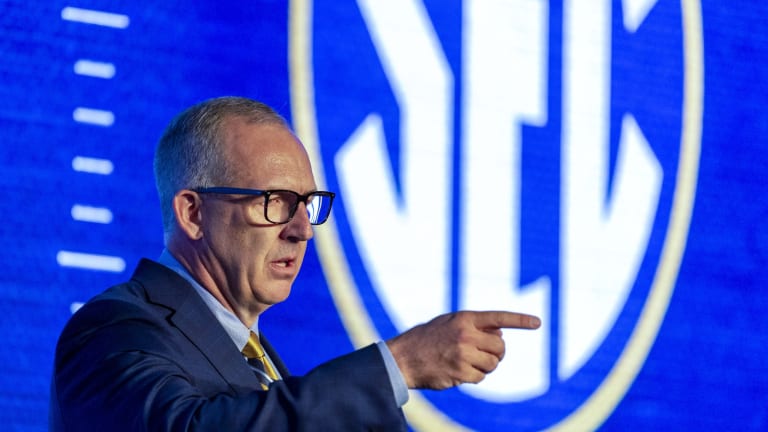
A JERSEY GUY: IF CFB Is Played This Fall, It Could Tear Apart The Sport

This much we know about the 2020 college football season.
Two of the Power 5 conferences, the Big Ten and the Pac-12 will not play and are working on contingency plans for next spring.
The ACC, Big 12 and SEC are working on plans to move forward and play this season, which, according to numerous sources, would conclude with CFB semifinal games in the Rose Bowl and Sugar Bowl and a championship game in the Orange in January.
But there is a problem with that scenario.
A Big problem, which could potentially tear apart any pretense of harmony the Power 5 have had.
"Let me ask you a question,''' said American Athletic Conference Commissioner Mike Aresco on Thursday afternoon. "If we (and the AAC is a Group of 5 conference that is also moving forward with playing this fall) play this season, and have a playoffs, What is the purpose for those conferences playing next spring?''
Aresco, who is opposed to spring football for a variety of reasons, said that any football in the spring would be diluted of talent, with an even more truncated season and without the top NFL potential talent, who would be preparing for the NFLdraft.
"And even if you could do all that, what kind of "playoff system'' are you going to have with just two leagues during a time when football is not naturally played and there will be lots of other competition,'' he said.
"And if you do that, you will adversely affect the 2021 fall season, because you would be asking college kids to play two full seasons in 8 months.''
One solution would be obvious, but it won't sell very well in Pac-12 or Big Ten territory, where there already has been widespread criticism of shutting down the fall season.
Call off spring football and start fresh next fall, with a full schedule and hopefully COVID-19 under some sort of control.
The Ivy League, which was the first conference to shut down football this fall has already indicated that any football in the spring is a long shot possibility at best.
But the stakes at the Power 5 level are much higher.
This controversy could also be averted if the Presidents of the SEC, Big 12 and ACC make a move similar to their brethren in the Pac-12 and Big Ten, by suspending all fall sports, feeling the risk is not worth the reward.
That would again create a semi-united front among the Power 5, which could make plans for a spring season, complete with playoffs in May.
But that would still affect both the spring and fall football seasons since each would have to be truncated (8 games?) versions.
The ultimate irony in this is that if the prevailing conditions somehow allow the Power 3 conferences to play this season, the Pac-12 and Big Ten would be shut out of any legitimate season with playoffs included.
The split in the CFB power structure would take decades to close.
The lack of communication among commissioners has been on display for the past few weeks, but there has been at least a pretense of harmony.
If the Pac-12 and Big Ten are relegated to a secondary role without any credible prizes at stake, there will be more than sniping.
You can see a glimpse of the future already when you hear the critics suggesting that a CFB playoff with only 3 of the Power 5 leagues is already watered down.
Defenders of the system and with a sense of history, can correctly look at the 6-year history of the current CFB playoff system.
Ohio State and Michigan State have been the only Big Ten teams to make the playoffs and the Buckeyes have done it three times, winning the national championship in 2015.
The Pac-12 hasn't had a Final Four team since 2017 (Washington).
In the past three seasons (12 teams) only two from the Pac-12 or Big Ten have made the semifinals, Ohio State (twice) and Oregon once. The Buckeyes are the only legitimate pre-season Final Four contender from either league.
So how viable are they in terms of a "weakened'' 3-Power 5 playoff?
The ultimate Catch-22 situation for college football is obvious.
To survive with some sort of united front in the long run, the best thing that could happen would be for no football this fall, which would mean a victory for COVID-19.
And, that may have begun to happen on Thursday afternoon when the NCAA announced it was shutting down all fall sports (it sponsors) but not FBS football.
That's a bad optics problem that even Clemson, Alabama and Texas will have trouble overcoming.
It could be over sooner rather than later.